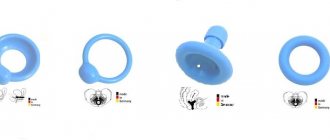Synonyms: Pelvic organ prolapse, or prolapse of the uterus or vagina.
In the work of a modern gynecologist, increasing importance is attached to caring for a woman’s quality of life and preserving her sexual function. Minor problems can be treated with injections or laser procedures, but minimally invasive surgery called laparoscopy continues to play an important role in the treatment of more extensive diseases. One of these problems is uterine prolapse, or pelvic organ prolapse, for which high-quality treatment methods are available that give good results.
What is pelvic organ prolapse and how common is it?
The pelvic floor forms a collection of various muscles and ligaments that hold nearby organs in the correct position (Fig. No. 1). The pelvic floor is often compared to the surface of a trampoline, which under the influence of gravity, increased abdominal pressure and other factors can lose its elasticity and weaken. If these muscles and ligaments become too “loose”, then organs descend along the path of least resistance - into the vagina.
It is not known exactly how common this disease is. In some studies in women after hysterectomy, vaginal prolapse is described in 40% of cases. It is estimated that approximately one in ten women will undergo surgery for pelvic organ prolapse during their lifetime.
Classification and degree of development of the disease
There are three degrees of development of the pathology of vaginal prolapse. They differ in the stage of prolapse and severity of symptoms:
1. in the first degree, the cervix is 2-3 centimeters from the perineum. The gap is widened, but with muscle contraction it can be closed. Accompanied by pain in the lower abdomen that occurs after physical activity. Frequent urination is not accompanied by pain. During sex, there is discomfort during insertion of the penis.
2. the second degree is recognized at a doctor’s appointment. The prolapse of the walls and cervix reaches the entrance to the vagina. When pushing, the throat of the cervix comes out, and comes back after relaxation. The pain intensifies and spreads throughout the abdominal cavity and perineal area. It does not stop at rest, but intensifies with load. The process of sexual intercourse becomes impossible or very painful. The penis enters the vagina tightly. Urination becomes involuntary. Jogging or jumping is accompanied by severe pain.
3. in the third degree, the vaginal walls weaken completely and lose the ability to hold the cervix and the organ itself inside. Uterine prolapse is observed visually. This leads to inflammatory processes and the development of microorganisms; due to the influence of the external environment, microcracks are formed in the vaginal mucosa. Failure of the hormonal cycle leads to menstrual irregularities. The pain syndrome is progressive. The woman is completely limited in her ability to move independently and visit the toilet.
4. The fourth stage means complete prolapse of the uterus and vaginal walls from the perineum.
In gynecological practice, prolapse of the vaginal walls is divided into 2 types:
- Cystocele is the process of prolapse of the anterior vaginal wall. Accompanied by a change in the position of the bladder towards the vaginal outlet;
- Rectocele is a pathological process of prolapse of the posterior wall, as a result of which a bend is formed in the rectum in which feces collect. Chronic constipation appears.
Prolapse of the vaginal walls develops gradually. The smooth development of the process is accompanied by the appearance of a hernia. The patient's condition is deteriorating. The disease can progress over 15 years. The exception is childbirth, after which the pathology is diagnosed immediately.
What causes prolapse?
Pelvic organ prolapse is more common in women during menopause, as well as in congenital connective tissue diseases, which are characterized by weak ligaments. Pregnancy and childbirth are also added to the risk factors. The risk of prolapse can be especially increased by the birth of a large fetus, as well as instrumental assistance during childbirth (vacuum extraction or the use of forceps), which may damage the pelvic floor. However, it should be remembered that nulliparous women can also experience pelvic organ prolapse.
The greatest attention should be paid to those risk factors that can be influenced by the woman herself, or the so-called modifiable risk factors. These include smoking, obesity, severe weight loss, and frequent constipation. A balanced diet is important - you should include plenty of fiber in your diet and take in enough fluids. Prolapse is more common in women who engage in weightlifting, as well as in cases of regular use of steroidal anti-inflammatory drugs. Also, chronic lung disease with frequent cough can contribute to the appearance of prolapse, so it is important to adequately treat such diseases. The risk is increased in women who have had a laparoscopic or abdominal hysterectomy (removal of the uterus), with or without a cervix. In such cases, proper suturing of the vaginal dome or cervix is important to reduce the risk of prolapse.
There are many reasons for the development of pathology:
- Anomalies in the development of connective tissue may well be congenital,
- Intra-abdominal pressure was excessively increased (respiratory viral diseases, constipation),
- Birth complications (labor was too long, trauma to the vagina, the baby was quite large, obstetricians were forced to use forceps),
- Sudden loss of body weight,
- Too much physical activity
- Surgical intervention to remove the uterus without subsequent fixation of the vaginal dome,
- Age-related changes. After sixty years, prolapse of the vaginal walls affects quite a lot of women, because at this age the elasticity of the tissues gradually deteriorates.
- Several births. If a woman gives birth two or more times, then the risks of prolapse of the vaginal walls become much higher.
What complaints does pelvic organ prolapse cause?
In the case of pelvic organ prolapse, complaints are the determining factor in choosing the necessary treatment method. This may be a feeling of pressure in the pelvis, sometimes even pain; often the patient feels or can feel a formation protruding from the vagina, on which abrasions can form over a long period. If you experience urinary incontinence when coughing or laughing, a sudden urge to urinate, or after urinating you have to push the protrusion back into the vagina, prolapse may be to blame. When the intestine protrudes, defecation problems may occur. Usually, the stronger the prolapse, the more pronounced the complaints, which may intensify over time. When contacting a doctor, it is important to accurately describe your existing complaints so that the specialist can offer you the most suitable treatment method.
Is it possible to slow down the formation of prolapse?
To reduce minor prolapse or reduce the risk of one, you can train the muscles that keep your organs in the right place by doing Kegel exercises.
They are based on repeated tension and relaxation of muscles. To understand which muscles need to be tensed, imagine that you are sitting on a ball and trying to lift it by tensing your muscles. This can be done in any position - sitting, standing or lying down. The goal of the workout is to hold the muscles under tension for approximately 10 seconds and repeat this exercise 8-10 times in one approach. You need to train 3 times a day at least 4 times a week. Follow this regimen for at least 16 weeks. To maintain the effect, this task must be performed over a long period of time, like any muscle training. Over time, you can try to tense your muscles more and hold them in this state for longer. If you are unsure if you are doing these exercises correctly, you may want to see a physical therapist.
What tests need to be done to diagnose prolapse?
The doctor evaluates the type and stage of prolapse during a gynecological visit, conducting an examination in a gynecological chair, and also taking into account your complaints, which are sometimes enough to plan treatment. During the exam, your doctor may ask you to tense your abdomen and cough to assess the extent of the prolapse and evaluate what treatment to offer. Depending on the patient’s age and complaints, the following may be performed: oncocytological examination, ultrasonography, aspiration biopsy of the uterine cavity. If complaints are related to defecation disorders, then the doctor may prescribe defecography to assess the condition of the intestine and rule out a possible proctological disease.
Diagnosis of the disease
Only a gynecologist can detect the disease in its early stages during an examination in a gynecological chair. The doctor can easily notice the walls protruding from the vagina. First, the gynecologist carefully adjusts them, and then assesses the condition of the pelvic floor muscles. After this, the patient is referred for additional examinations to determine whether there are additional problems.
How to treat pelvic organ prolapse?
Both non-surgical and surgical methods can be used to treat prolapse. The main goal of any treatment is to reduce your complaints and improve your quality of life while maintaining normal function of surrounding organs. If you are sexually active, it is important to restore or maintain your sexual function without worsening it. Depending on your complaints and the stage of prolapse, the doctor will evaluate and suggest the most suitable treatment method.
It is important to remember that no treatment method guarantees 100% positive results, and repeated prolapse is possible, however, there are methods that have proven themselves better than others.
Non-surgical methods
Non-surgical treatment is offered to patients as the first choice. For prolapses of a milder stage, you can perform Kegel exercises, but you should understand that this process takes a lot of time, and you can achieve the desired result with its help no earlier than in a couple of months. As a next step, your doctor may suggest placing a pessary, a round silicone device, into your vagina. Depending on the complaints, a pessary of the required size and shape is selected, it is placed in a compressed form in the vagina, where it occupies the desired position and holds the organ (uterus or bladder) in the correct place. The pessary helps best with prolapse of the anterior wall and uterus, worse - with rectocele. It is important to care for and wash your pessary regularly, and you will need to return to your doctor so that they can assess the integrity of the vaginal wall and check for pressure sores.
Operation
Of course, they will not replace damaged ligaments and fascia. Surgical treatment for severe forms of prolapse is the only effective treatment method. The most popular, studied and natural operations are those performed through the vagina. In this case, it is possible to restore all parts of the pelvic floor and achieve excellent cosmetic results with minimal risks for the patient.
hybrid techniques have become widespread.
, which allow you to restore the natural anatomy of the pelvic floor through a combination of organ-preserving techniques, maximum use of the patient’s own tissues and targeted/targeted use of synthetic materials in the busiest areas.
Surgery
Depending on the type of prolapse, your age and wishes, different surgical approaches may be used. Nowadays, two approaches are mainly used - laparoscopic and vaginal. JV klinika offers both.
Laparoscopic treatment - sacrocolpopexy
Laparoscopic sacrocolpopexy, or promontofixation, is the gold standard in the treatment of pelvic organ prolapse. This method is widely used throughout Europe and the USA. Dr. Juris Vītols has been using it for over 15 years. Over time, laparoscopic correction of prolapse has improved, and now JV klīnika doctors perform it according to the model of their French colleagues, which, compared to other methods, provides better treatment results. Four small incisions are sufficient to perform laparoscopic correction. An assistant in achieving good results is a specially selected mesh, which has the finest structure and is designed specifically for the treatment of pelvic organ prolapse. However, the main condition for achieving a good result is the experience of the operating gynecologist, his knowledge of anatomy, as well as laparoscopic suturing skills. The main advantages of laparoscopy are improved visualization of anatomical structures, reduced postoperative pain, faster recovery after surgery and a lower risk of complications.
During this operation, a mesh is fixed to the anterior and/or posterior wall of the vagina, the second end of which is secured in such a way as to ensure the correct and natural direction of vaginal tension. Thus, the mesh forms a new, strong layer that strengthens the vaginal walls and organs, keeping them in the correct position. Often during such an operation it is desirable to additionally remove the uterus, which significantly improves the results of treatment. If the patient plans to become pregnant in the future, the uterus can be preserved. In this case, delivery should be carried out using a planned caesarean section.
Laparoscopic sacrocolpopexy is highly recommended for young, sexually active women, but age is by no means a barrier. In a study conducted in England, the oldest woman to have this operation was 97 years old.
The main advantage of this method, compared to other operations using mesh, is that in one approach all weak points can be corrected by covering both the anterior and posterior walls of the vagina with mesh, without opening the vagina. There are similar operations, during which the mesh is attached only to the cervix or to the dome of the vagina. In such cases, if the patient is diagnosed with cystocele or rectocele, it is additionally necessary to perform vaginal correction of the anterior or posterior vaginal wall, which is not recommended for sexually active women. The effectiveness of laparoscopic sacrocolpopexy is observed in more than 90% of cases, and it is important that this effect, compared to other methods, is the most durable.
Position of the mesh after treatment of pelvic organ prolapse
Vaginal correction
This approach is still widely used in the treatment of pelvic organ prolapse. Both cystoceles and rectoceles can be treated with this method, and is often used for complete uterine prolapse when a vaginal hysterectomy is performed and the vaginal walls are sutured. Meshes can also be used in vaginal surgery, but we do not support their placement on the vaginal side due to the high risk of inflammation. In addition, these meshes are fixed blindly, using only the sense of touch, in contrast to laparoscopy, in which one of the main advantages is visualization.
However, the vaginal approach is definitely the primary type of surgical treatment for women who are not sexually active and who have contraindications for laparoscopic treatment.
Address risk factors, exercise, get counseling
Pelvic organ prolapse is a common problem that can not only significantly reduce the quality of life, but also cause functional impairment of the organs if the prolapse is not corrected in a timely manner.
To reduce the risk of prolapse, women of any age are advised to promptly address possible risk factors and perform Kegel exercises in advance to strengthen the pelvic floor. Unfortunately, pelvic organ prolapse cannot be predicted. Sometimes, even after a completely normal and non-traumatic birth, complete uterine prolapse can occur. It is important to remember that this is not a normal situation, and in such cases, consultation with the operating gynecologist is necessary. The good news is that there is a solution to this problem for women who want to maintain the ability to bear a child. We believe that laparoscopic sacrocolpopexy is the most effective method, but the complaints and needs of each woman must be assessed individually. If you want to live a full and high-quality life, then perhaps only a pessary or simple corrective surgery of the anterior vaginal wall will be enough.
The work of the Gynecology and Surgery Clinic JV klīnika is based on the knowledge accumulated by Dr. Juris Vitols during his professional career, as well as the excellently organized work of the team, which is an important component of comprehensive patient care. Since the first laparoscopic gynecological operation performed by Dr. Juris Vitols in 1994, he has performed more than 10,000 endoscopic procedures. Already in 1995, Dr. Juris Vitols was the first in Latvia to perform laparoscopic hysterectomy. Also, Dr. Juris Vitols is a pioneer in the laparoscopic treatment of endometriosis. Thanks to the excellent cooperation with the surgeon Dr. Kaspars Snipis, JV klīnika can be proud of the largest experience in laparoscopic treatment of deep endometriosis in Latvia, including in cases where resection of part of the intestine is necessary.
The son of Dr. Juris Vitols, Jurgis Vitols, has been involved in the work of the clinic for 5 years now. He also specialized in gynecological surgery, especially laparoscopy and hysteroscopy. He gained additional knowledge during an internship in France, as well as during regular visits to European congresses and seminars on endoscopic gynecology.
JV klīnika offers the widest range of laparoscopic gynecological operations. We offer surgical treatment of endometriosis, including in cases where it is necessary to cut out large, deep lesions, which can often cause severe pain. We also offer: laparoscopic correction of uterine prolapse, removal of fibroid nodes of various sizes while preserving the uterus, enucleation of ovarian cysts, restoration of patency of the fallopian tubes, separation of adhesions, correction of urinary incontinence, creation of a vagina in women with a congenital absence of it, correction of suture insufficiency after cesarean section (niches), as well as other complex laparoscopic operations. Surgical treatment for postpartum perineal injuries is also available.
Treatment of prolapse of the walls of the vagina and uterus
Treatment of prolapse of the walls of the vagina and uterus is performed surgically. All other options, such as the use of uterine rings and pessaries, are temporary measures that do not solve the problem.
There are many surgical methods to eliminate prolapses. The operations are performed using the patient’s own tissue or special synthetic prostheses to strengthen the vaginal walls. Synthetic prostheses are used strictly in cases where reconstructive operations using one’s own tissues are impractical.
Modern operations are high-tech complex manipulations that are performed without skin incisions, through vaginal access, using complex instruments.
Today, many devices for strengthening the vaginal walls are appearing on the medical product market. Many of them are not properly tested and approved. In recent years, the principle of registration of synthetic prostheses has been changed. For example, in the USA, the use of synthetic prostheses that have not passed appropriate clinical trials is prohibited.
All prostheses differ from each other in their characteristics, although they are mostly made from the same material - polypropylene. Only the correct choice of surgery, individual selection of a prosthesis and the experience of a specialist can minimize all possible risks.
Our clinic is a training center for vaginal surgery for specialists from Russia and other countries. The clinic is recognized as a training center for doctors by the International Society of Urology (Societe International d'Urology) and the European Urological Association. Our specialists have extensive experience in operations of this profile and share it with doctors of other clinics. We trained young doctors from Germany, Great Britain, Spain, Israel and many other countries.
Leading specialists in pelvic floor reconstruction are employees working under the guidance of Professor D. Yu. Pushkar: associate professors M. Yu. Gvozdev and G. R. Kasyan. They deal with issues of vaginal surgery and urogynecology. You can get specialist advice and choose individual treatment by signing up for a free appointment.








